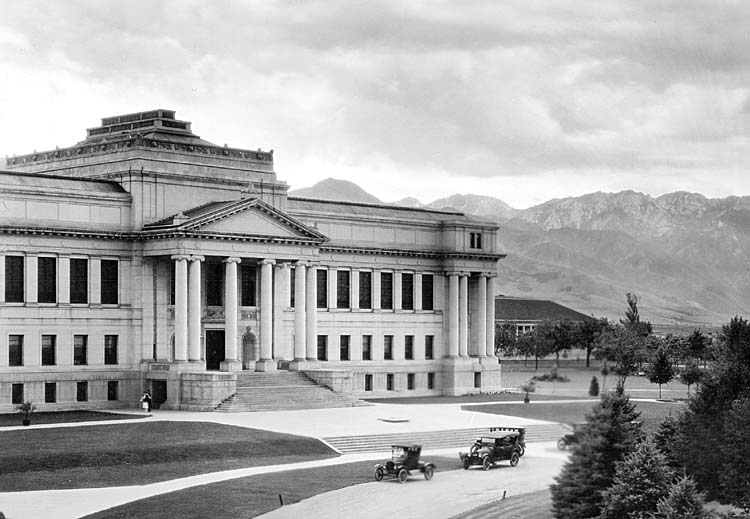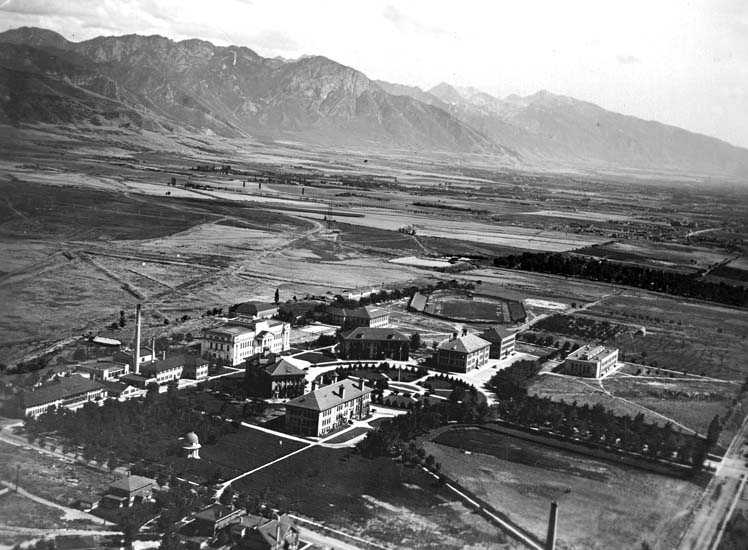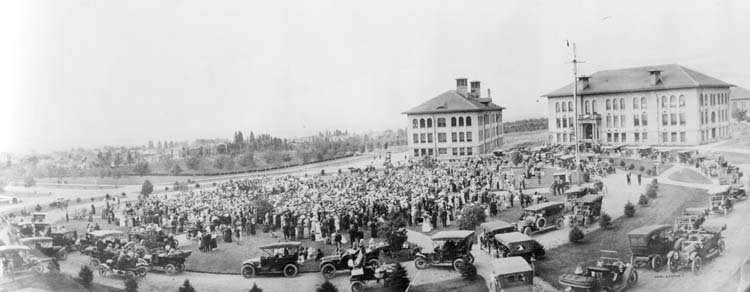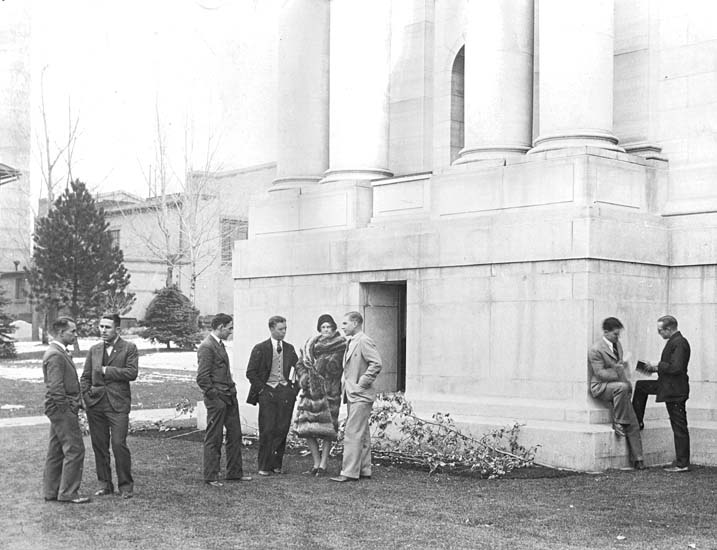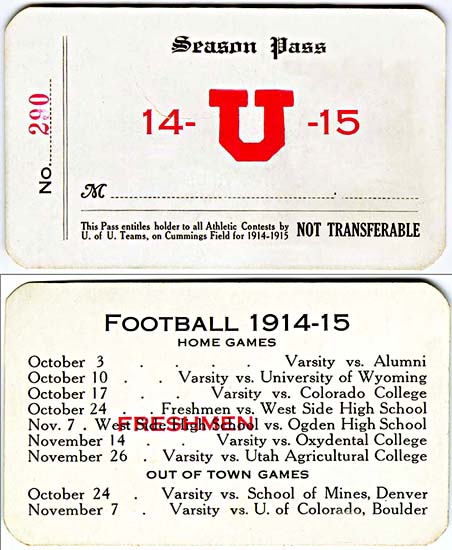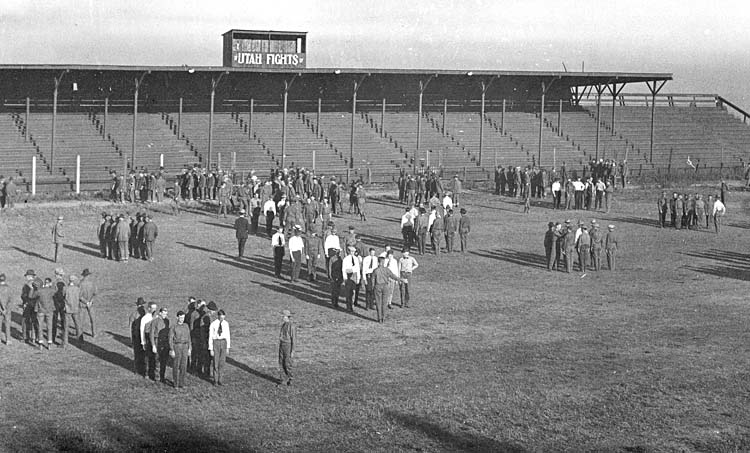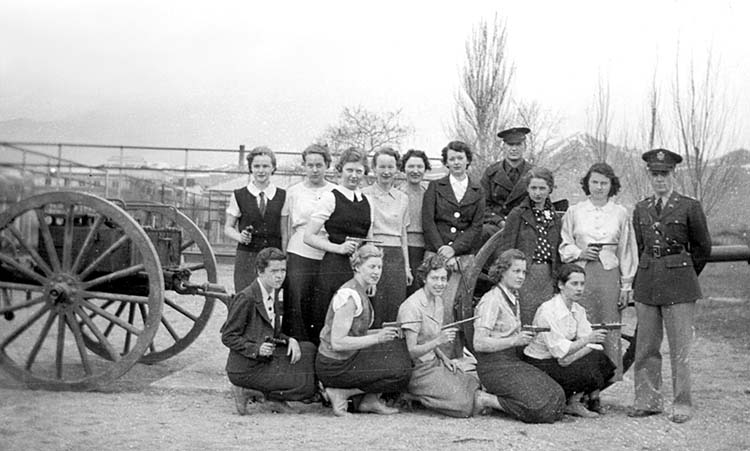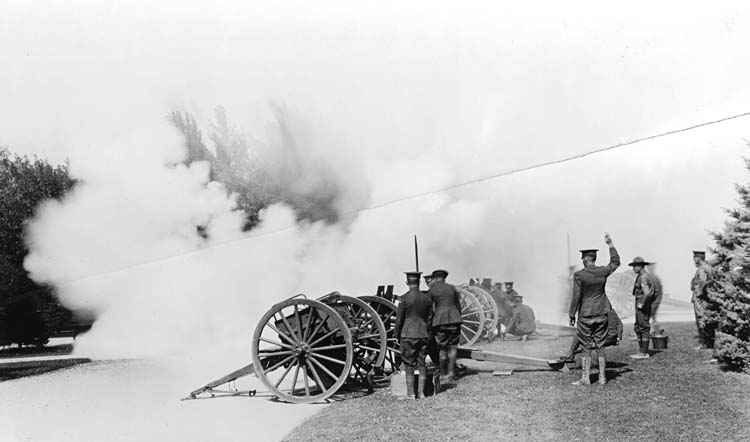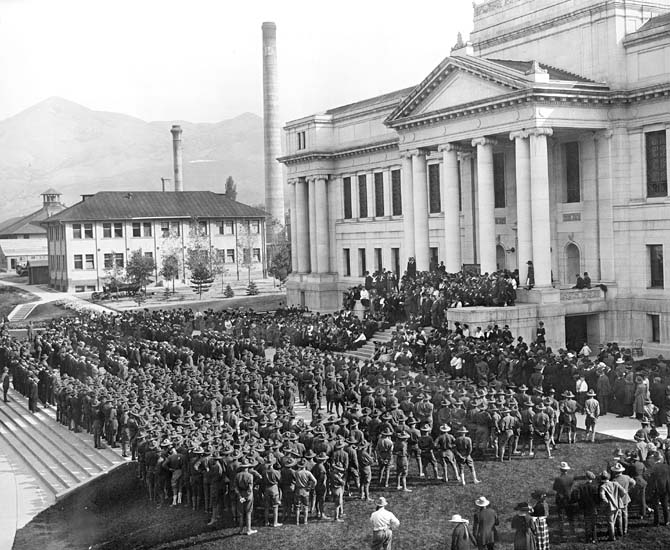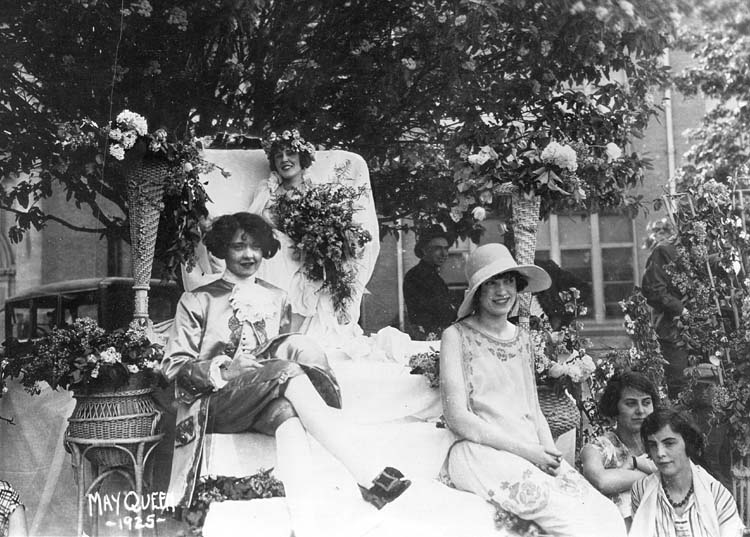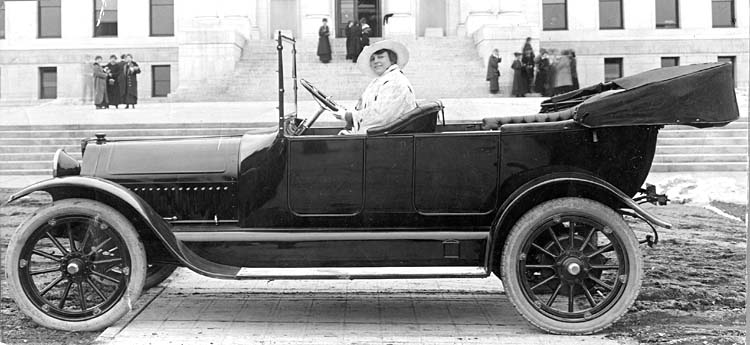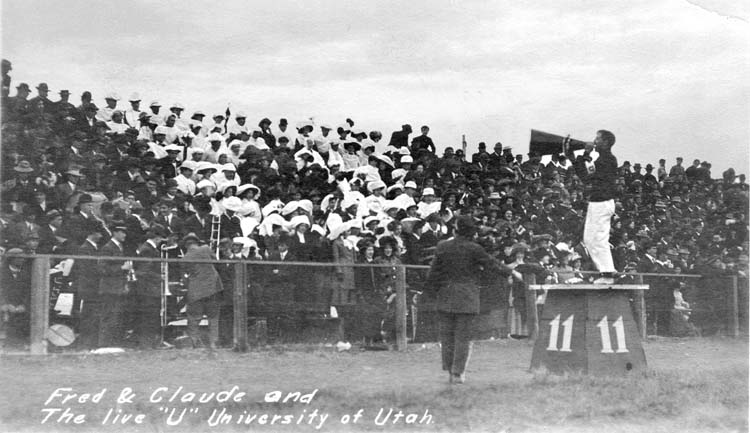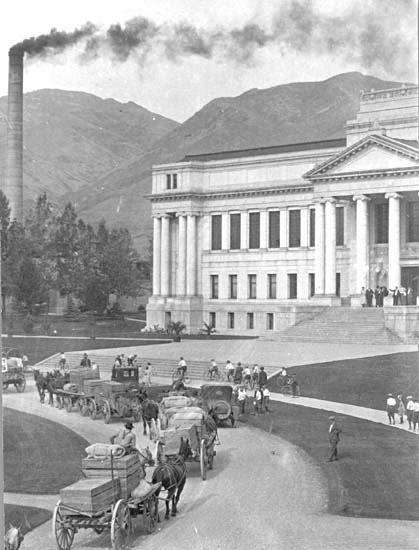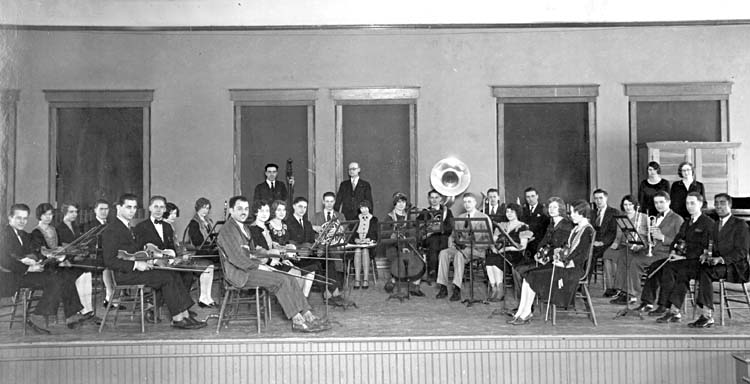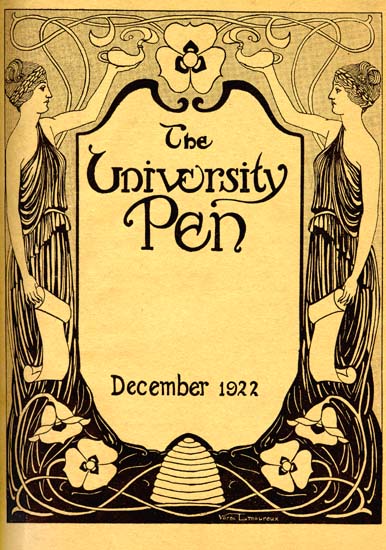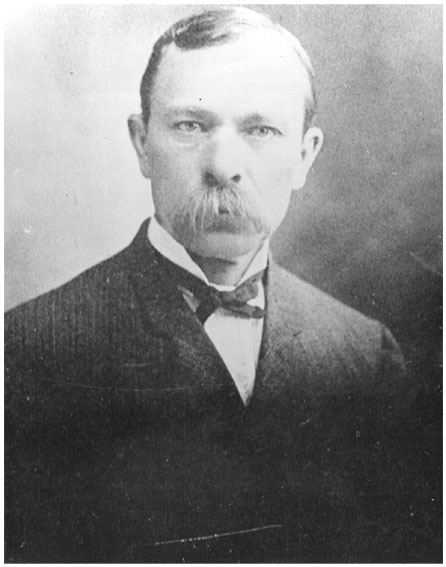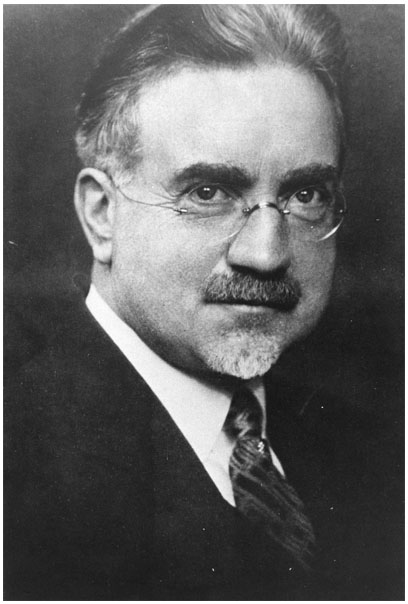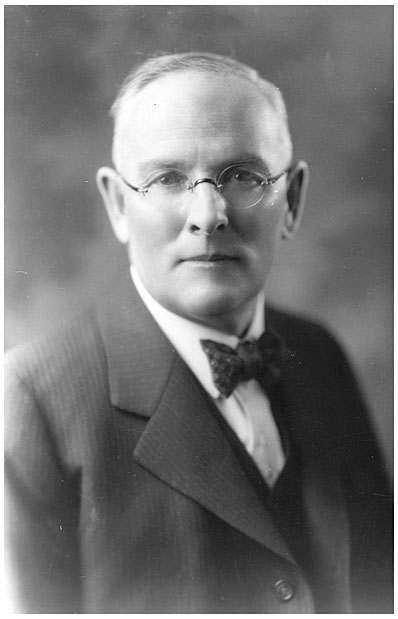801-585-3073
University of Utah Sesquicentennial, 1850 - 2000
World War I and the Roaring 20's

Leadership : President Widtsoe and the Approach of War
Dr. John A. Widtsoe, inaugurated as President of the University of Utah in January 1916, had already had a distinguished career as a scientist and educator at the Utah State Agricultural College, and was a recognized authority on the problems of dry-land farming and irrigation. Despite some grumblings from the faculty at the University of Utah about the method of his hiring; and the fact that he was from the “cow college” to the north, he soon settled in as an effective and respected leader. No sooner had he begun to pull the University of Utah out of the doldrums of the 1914 academic freedom controversy, however, than he faced yet another crisis. By 1916 it was becoming obvious to many that America would be drawn into the war raging in Europe. When the war started in August 1914, it caused a stir of interest on campus, but it wasn't until early 1916 that a movement began to prepare the country for entry into the conflict. General Richard W. Young, a graduate of the University of Utah, proposed a training program for University students, and although his program was not adopted it did raise the level of consciousness among students and faculty about the war aims of the allies.
Mobilizing for War: The University Responds to World War I
The Board of Regents finally decided, just a week before the U.S. declared war on Germany in April 1917, to establish a Department of Military Science and Tactics. By that time it was late in the game, and great confusion resulted as the University tried to put itself on a war-time footing. Drill for male students was made compulsory, even though there was no one from the Army to lead the students in the necessary military evolutions until the end of the school year, and they were forced to use dummy wooden guns. Students were urged to volunteer time on farms to increase food production or to join one of the active services, while those who were leaving for military service were given full credit for courses, or given their diplomas if they were seniors. The rush to prepare for war was so distracting that final exams were dropped that year. Many women students and faculty responded enthusiastically to the call, and were put to work with the local Red Cross unit preparing bandages, knitting sweaters for the boys “over there,” and helping with food production.
The S.A.T.C. Experiment: Chaos on Campus During Wartime Training
In October, 1918, the University of Utah was officially designated a training camp for the S.A.T.C., or Student's Army Training Corps. Despite all the work of the past year in putting the University on a wartime basis, this turned what had been confusion into chaos. The University was now responsible for the task of feeding, housing, and seeing to the needs of over 1,200 men. The S.A.T.C. experiment proved to be a fiasco. Lines of communication and chains of command were muddled, and students enrolled in the training program were too tired to attend their regular classes; when they did, it was common to see them slumped over their chairs, sound asleep.
Pandemic and Peace: The Spanish Flu and Wartime Campus Life
To make matters much worse, in late 1918, the Spanish Influenza epidemic reached the Intermountain West. The epidemic, which ultimately took more lives than all the battle casualties of World War I, struck crowded Army camps especially hard. The University of Utah responded by canceling classes and sending all students, including the cadets, home. The Army ordered the cadets back to their barracks, with the result that twenty-eight of them died of the disease, in addition to fifteen other students. Then on November 11, 1918, an armistice was signed between the warring powers, and suddenly the S.A.T.C. was superfluous. By the end of the year all cadets had been demobilized and the University returned to a state of normalcy.
Postwar Progress: Academic Expansion and New Leadership in the 1920s
Programs, both academic and building, that had been suspended during the war crisis were resumed. In 1918 a program in Pharmacy was added to the Medical School curriculum, the School of Business was organized, and the Observatory building was constructed. That same year, the four quarter academic year was introduced, which endured until 1998. Two buildings that were originally supposed to be barracks–the Medical and Stewart buildings--were instead completed for academic use in 1920. Nor were the lessons of the S.A.T.C. lost; the R.O.T.C., or Reserve Officer's Training Course, was established in 1920, and was to prove of great value in the next national crisis. In 1921, President Widtsoe resigned to accept a mission for the L.D.S. church, and was replaced by George Thomas in April 1922. Dr. Thomas, a scholar in the field of economics, was “a man of exceptionally clear and practical vision,” and would prove a good choice to guide the University during the decades between the World Wars. One of his visions was that the University of Utah, while it would never be one of the largest schools in the country, could be one of the best. With that goal in mind, he caused admission standards to be raised, abolished the high school program, and generally improved the level of scholarship at the University. The student body wholeheartedly supported President Thomas in these endeavors, with the result that the University of Utah was admitted into the Association of American Universities, and a chapter of Phi Kappa Phi was established.
Growth and Achievement in the Roaring Twenties
Under President Thomas, the number of students enrolled jumped dramatically. By 1932, there were 3,600 students at the University, an increase of 78 percent. Similar increases took place within the faculty; by the end of the 1920s there were 182 faculty members, 54 of which held a PhD. Among the faculty who would make a mark on the academic landscape of Utah in the years to come were James T. Harwood, the famous artist; Herbert Maw, a future governor of Utah; Walter P. Cottam, a botanist for whom Cottam Gulch in the lower campus is named; Gail Plummer, nationally known theater director; anthropologist and Aztec scholar Charles Dibble; and William Behle, a world-renowned ornithologist. Dr. Thomas also oversaw a period of expansion of the campus, with the construction of the Union Building (now Gardner Hall) beginning in 1925 but not completed until 1931; the Stadium, ready for its first game in October 1927; Kingsbury Hall, dedicated in 1930; and a number of smaller improvements. Renovations were carried out in the Medical Building, the Gymnasium, the Mechanical Arts Building, and the Park Building. At the end of the “Roaring Twenties,” President George Thomas could look back on a solid decade of expansion and improvement, but he was about to face a national crisis as devastating to his presidency as the Great War had been to his predecessor.
